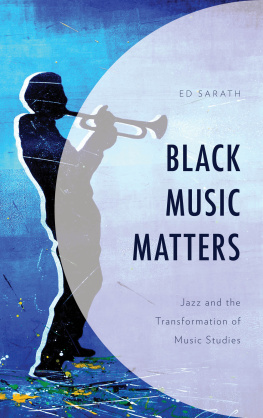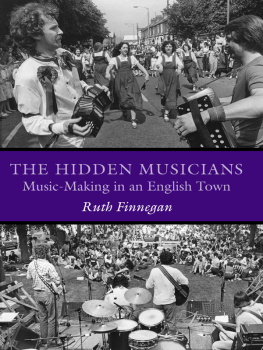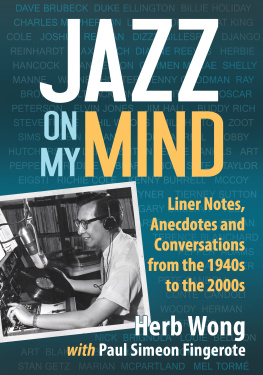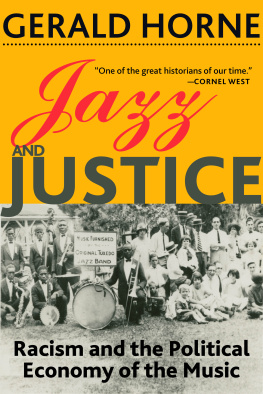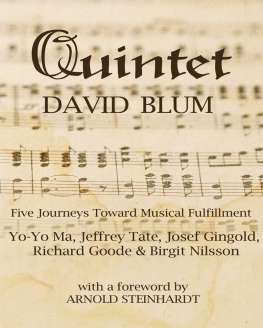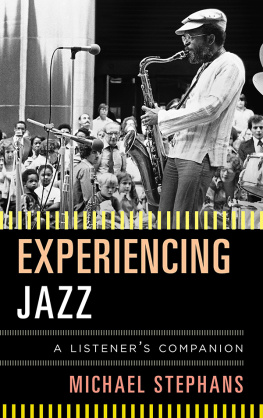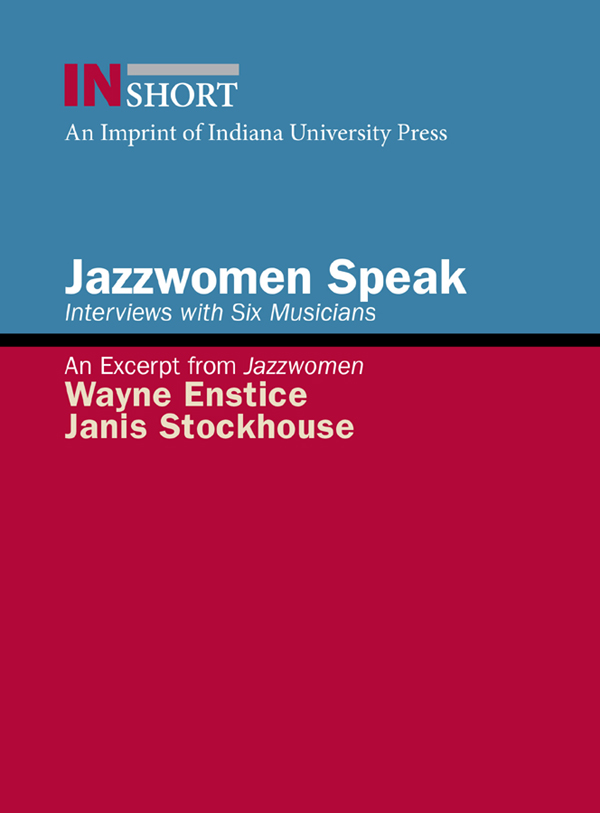Jazzwomen Speak
In Short is a new series of digital books from IU Press that focuses on contemporary and historical issues. Titles in the series will feature original content from distinguished authors and will also showcase carefully selected excerpts from previously published IU Press books and journals. Books offered in the series will provide discerning readers with short, engaging views of important and compelling topics in multiple formats. For a list of books in the series, please visit: iupress.indiana.edu
Jazzwomen Speak
Interviews with Six Musicians
Wayne Enstice AND
Janis Stockhouse

This book is a publication of
Indiana University Press
Office of Scholarly Publishing
Herman B Wells Library 350
1320 East 10th Street
Bloomington, Indiana 47405 USA
Telephone orders 800-842-6796
Fax orders 812-855-7931
iupress.indiana.edu
2013 by Wayne Enstice and Janis Stockhouse
No part of this book may be reproduced or utilized in any form or by any means, electronic or mechanical, including photocopying and recording, or by any information storage and retrieval system, without permission in writing from the publisher. The Association of American University Presses Resolution on Permissions constitutes the only exception to this prohibition.
Manufactured in the United States of America
Jazzwomen Speak: Interviews with Six Musicians consists of material from Jazzwomen: Conversations with Twenty-One Musicians, by Wayne Enstice and Janis Stockhouse. Copyright 2004 Wayne Enstice and Janis Stockhouse.
The Library of Congress cataloged Jazzwomen: Conversations with Twenty-One Musicians, as follows:
Enstice, Wayne, date.
Jazzwomen : conversations with twenty-one musicians / Wayne Enstice and Janis Stockhouse; preface by Cobi Narita and Paul Ash.
p. cm. (Profiles in popular music)
Includes bibliographical references (p. ), selected discographies, and index. ISBN 0-253-34436-0 (cloth : alk. paper)
1. Women jazz musiciansInterviews. I. Stockhouse, Janis, date. II. Title. III. Series.
ML 395.E572 2004
781.65092273dc22 2003022615
978-0-253-34436-6 (cloth : alk. paper)
1 2 3 4 5 18 17 16 15 14 13
978-0-253-01058-2 (INshort e-book)
CONTENTS

JoAnne Brackeen
Photo by David Spitzer. Used by permission.
JoAnne Brackeen
1
The only woman to hold a chair in Art Blakeys Jazz Messengers, pianist/composer JoAnne Brackeen played with that most imitated of all combos from 1969 to 1971. Music critic Leonard Feather predicted that Brackeens postbop playing would be as important to the 1980s as Bill Evanss and Herbie Hancocks contributions were to the 1960s. This trailblazer for women in jazz has twenty-five albums as a leader and more than three hundred compositions to her credit.
Born in Ventura, California, in 1938, the former JoAnne Grogan learned her instrument by playing along with records. After moving to Los Angeles at sixteen, she began performing in earnest at local jazz clubs. Blessed with a towering six-foot frame, she was able to pass for older, allowing her the opportunity to play with established saxophonists Harold Land and Teddy Edwards.
She married tenor player Charles Brackeen in 1960, and five years later the burgeoning family moved to New York City. Her early years in New York were devoted to raising four children and paying her dues to break into the insular world of jazz. Following the period with Blakey, she had stints with Joe Henderson and, in the mid-70s, the Stan Getz Quartet. Brackeens exposure with Getz, especially her performance on the Grammy-winning Stan Getz Gold, brought her critical acclaim and the attention of a much wider audience.
Brackeen has been an established leader since the late 1970s, primarily in the trio format. Her keyboard presence is marked by a percussive attack, even at slower tempos. On bright pieces, Brackeens biting, jackhammer-like articulation in complex right-hand lines is countered by rumbling chordal progressions in the left. The close, rhythmic two-handed interplay generates a dense, at times tumultuous, barrage of sound that can consume a listener with its unrelenting tension. Brackeens command of the piano is superbly displayed on her tour de force solo recordings, such as Live at Maybeck
for example, this unconventional pianist treats the listener to a metric excursion as she artfully and playfully shifts between six different time signatures. More a consolidator than an innovator, Brackeen frequently borrows from avant-garde vocabulary to create stunning musical mosaics that are marked by dissonant harmonies and disjointed but buoyant melodies.
Brackeen has been cited repeatedly in the polls as one of the worlds leading jazz pianists, and since 1994 she has been a professor at the Berklee College of Music. Showered with honors over the years, she was recently featured in Ken Burnss TV documentary Jazz, as well as in Robert Doerschuks 88 Giants of Jazz Piano. JoAnne Brackeens 1999 recording, Pink Elephant Magic, for Woman of the Year.
Recorded June 21, 1996, and April 18, 1999
WE: JoAnne, what is the primary source of your music?
JB: My breath. All knowledge is in the breath, and it also feeds the body. Now I find out that it heals the body. Its your connection with the Earth. Music is energy and the air is energy, and so it all comes from one thing. And much of the study I do of music is that way. I never went to music school. I am in music school, and I got born here; Earth is the music school for me.
WE: When did you first decide upon a career in music?
JB: I never decided that. I heard music when I was two or three and I really liked it. I mean, it didnt seem like anything separate. So if somethings not separate, its hard to say when you decided. Its like saying when you decided to breathe. But its always been magical for me. The most sparkly color feeling, a feeling of home, a feeling of what I belong to.
JS: Does your whole life revolve around music?
JB: Everything is music. I couldnt really separate music from life. You know, one time I was doing this record date for the MPS label. It was in the Black Forest of Germany. We went into the studio, and I did the whole thing in about four hours. When I went back to my hotel, I dont know what happened, but for about a half an hour everything was sound. And I wasnt asleep. It was amazing. As a matter of fact, I didnt even know I was hearing it until it started to leave. It was like a full circle; it had all rhythm and all sound. I dont know if its like some special thing in that area, but if someone was walking down the hallway of the hotel, or a horn honked outside or something, I could hear it later. It was just coming from that space into those sounds. It was all sound, but it was inaudible. Then as I came out of this state it started to fade into various sounds. It divided into separate sounds in the Earth, like into the separate things you normally hear. So then I realized that thats what people talk aboutlike a cosmic sound? There is no sound that isnt music; they just take different forms and rhythm and pitches.


